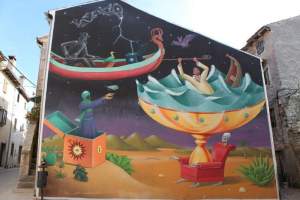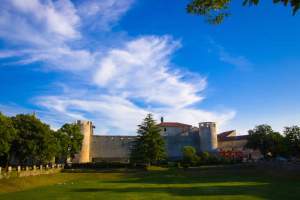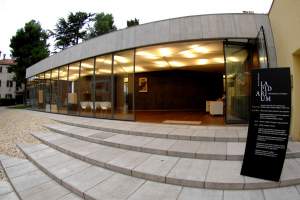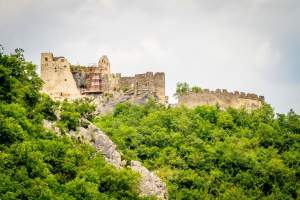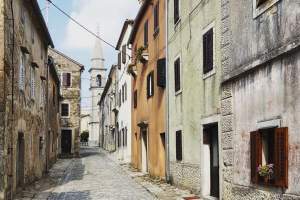Abandoned Stone Quarries
The ancient abandoned stone quarries should also be added up to the sights of Vrsar. In the Vrsar quarries the stone has been obtained ever since Roman times. Within easv reach of the basilica of St. Marv. on the islets offshore there are remains of abandoned quarries (e.g. on the top of the islet St. George). Some art historians brought up a theory that maybe the monumental and monolithic cupola of the East Gothic king Theodore the Great's (493-526) mausoleum in Ravenna (having a diameter of 10.76 m and weighing 230 t) is made of the rock broken off the top of that islet. (The archaeologist and historian Dr. Ante Šonje is of the opinion that the cupola originates from a quarry south of Poreč.) On the peak Gavanov Vrh (Ital. Monte Ricco) east of Vrsar there is also an abandoned quarry, as well as on a hill north-east of Vrsar. High-quality grey stone (Aurac) has been obtained here ever since Romanesque times. The quarries around Vrsar and Rovinj were exploited to the most extent during the long rule of the Venetian Republic in Istria (from the 13th to the 18th century).In the time of the Renaissance and Baroque the high-quality stone from Vrsar (pietra di Orsera) was well Vrh (Ital. Monte Ricco) east of Vrsar there is also an abandoned quarry, as well as on a hill north-east of Vrsar. High-quality grey stone (Aurac) has been obtained here ever since Romanesque times. The quarries around Vrsar and Rovinj were exploited to the most extent during the long rule of the Venetian Republic in Istria (from the 13th to the 18th century).In the time of the Renaissance and Baroque the high-quality stone from Vrsar (pietra di Orsera) was well known in Italian towns. It was especially used in Venice for building of palaces, bridges and churches. In order to provide good quality stone. Italian sculptors and constructors have occasionally visited Vrsar. The first figures concerning exportation of Vrsar stone to Venice date back to the 14th century. In the year 1334 the Venetian sculptor Leonardo Tagliapietra was staying in Vrsar temporarily. The Renaissance sculptor Antonio Rizzo (1467-1498) from Verona, who donated to Venice his most important works of art (e.g. the tombstone to the doge Iron, works on the doge's palace etc.) visited occasionally Rovinj and Vrsar at the time of his full activity in Venice. Nowadays the international sculpturing school is held every summer in the revived quarry "Montraker". Works of art made in this school remain in Vrsar making the town space nobler in that way. By the road to Funtana there is the cemetery built in 1900 by Celeste Gerometta, a building contractor from Vrsar. In the vicinity the atelier - summer mansion of the sculptor Dušan Džamonja is standing. In the large park miniatures of his works are exhibited, whereas the originals are located all over our country, as well as abroad.












